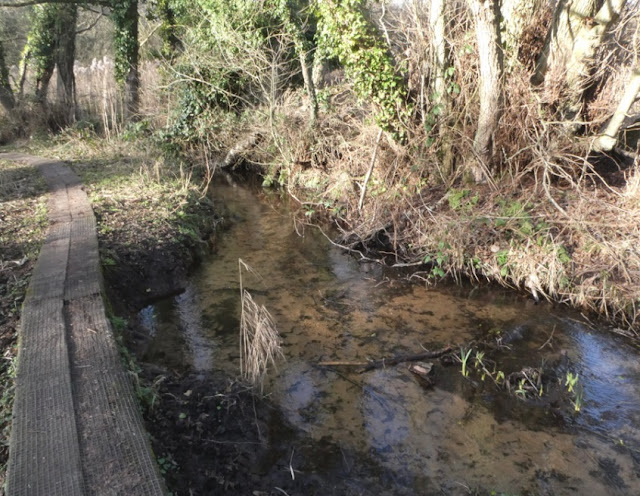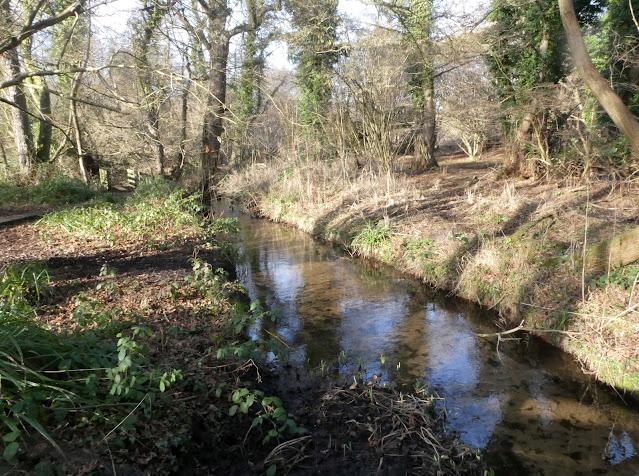We had been wondering how long it would be until we saw our first bee of 2023. We didn't have to wait long for on 5 February we found this one drawing pollen from a bunch of catkins at SWT Newbourne Springs, and it wasn't the queen bumble I had been expecting. Look at those bulging pollen sacs. However, it seems that Hazel catkins do not rely on insects for pollination.
We visit this reserve a few times each year. The photos below show some of the seasonal signs we noticed on our most recent visit. It isn't always the signs that take centre stage; there is little to beat the sound of the trickling stream!
 |
| The boardwalk is pretty narrow as it runs along the stream, which is fed by Newbourne Springs. |
 |
| Signs of new life ... |
 |
| ... and ghostly reeds. |
 |
| A land of sunshine and shadows. |
 |
| At this point we veered away from the stream ... |
 |
| ... to an open grassy swathe, before heading back down ... |
 |
| ... to the stream again. This old reed reminded me of a sentinel Heron. |
 |
| The Jay was at some distance, not far from a corrugated reptile shelter. |
 |
| My thanks to David for his photo of the delicate female catkin in among ... |
 |
| ... larger male ones. The blue arrow points to the red females. |
 |
| We may not have seen an actual Grey heron, but there was a Little Egret in the marsh. |
 |
| Signs of Wild Arum in among the Snowdrops ... |
 |
| ... and our first Primrose of 2923! |
 |
| More drifts of Snowdrops ... |
 |
| ... and more. |
 |
| This bird was too high up for my zoom lens, but I think it is a Redwing. |
 |
| Back to the starting point ... |
 |
| Newbourne Springs used to supply water to Felixstowe. |

3 comments:
Interesting! I normally see bumbles first, but not this year. Same day as you, honeybees. And I found my first female hazel flowers today too. THey are insanely small
What a super reserve :) Not seen any bees this year - the only insects seen are winter gnats/winter craneflies. We have male and female hazel catkins in the garden :)
Beautiful selection of photographs.
All the best Jan
Post a Comment